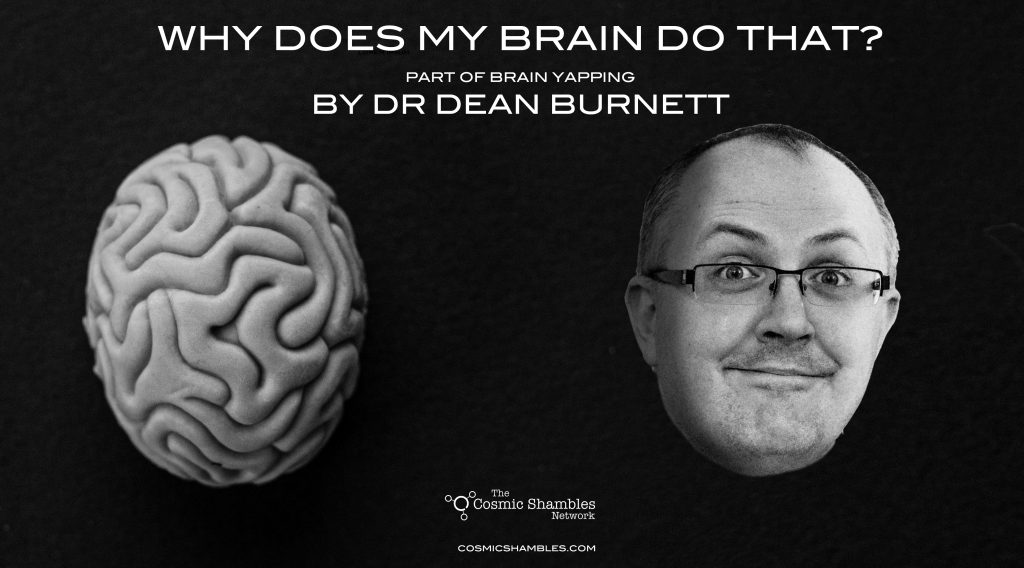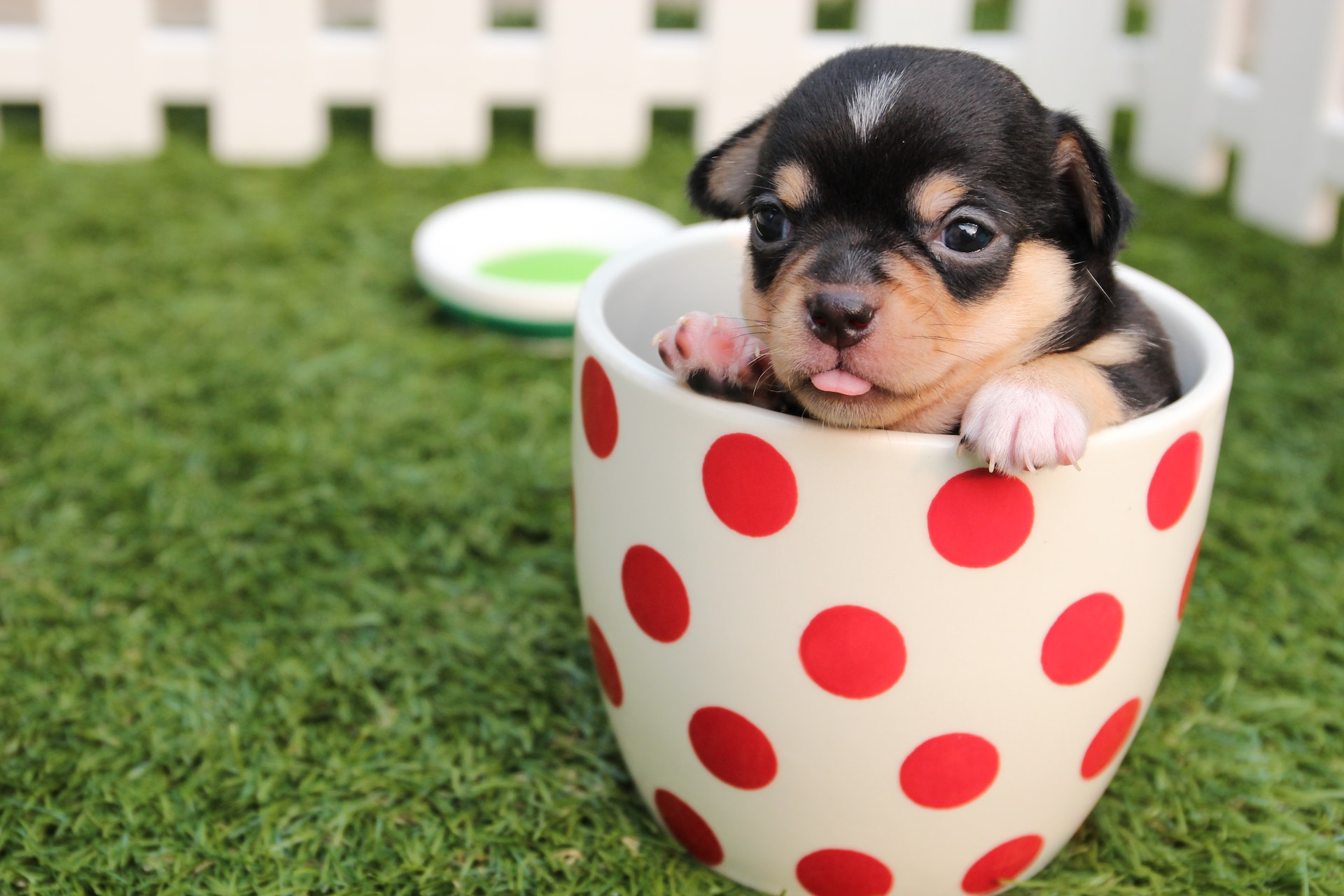BRAIN YAPPING
DR DEAN BURNETT
Why Do We Experience ‘Cute Aggression’?
Why Does My Brain Do That PreviewIn this series, bestselling neuroscience author Dr Dean Burnett answers Shambles Patreon subscribers questions about their brains. A sort of neuroscientific agony aunt if you will.

Christopher writes, “Can you please talk about what I think is called ‘Cute Aggression?’ Why does my girlfriend want to squeeze our kitten until it bursts? Obviously she doesn’t want to literally do that (I hope) but it’s a proper urge. Why does her brain do that? (I am hoping by name dropping the series title it means I get my question answered.)”
Thanks for the question, Christopher.
And while I get your point, I can’t say I approve of you throwing your girlfriend under the bus like that. Revealing her alarming tendencies on such a public platform? This is someone who you already know has the urge to crush things to death for no reason, is it wise to actually give her a valid one?
Unless this is one of those scenarios where you’re really asking for yourself, and your girlfriend is one of those ones that I wouldn’t know because she goes to another school?

In truth, there’s no need for you/your girlfriend to be embarrassed or ashamed about this surreal reaction to cuteness. The urge to crush or otherwise harm things we find intensely cute? It’s a very common phenomenon, and you’re right that it’s often labelled ‘cute aggression’. There’s a surprising amount of research into it in the literature.
To explain why it happens, first we need to understand why we find things ‘cute’ in the first place. What is cute? Why are some things cute, but not others?
For once in the arena of brain matters, the answer is fairly straightforward: we find things cute because they have traits in common with babies. Small size, softness, big eyes and heads, vulnerability, open emotional expression, all these things and more typically make us perceive something as cute, and all of them are things firmly associated with babies.
It makes sense that humans would evolve to be very sensitive to babies, and anything that resembles them in any way, because they’re born in such a vulnerable state and remain that way for so long, especially when compared to practically every other species. Having a big brain isn’t all good, it seems.
So, whatever your logical mind might think about babies, and all the stress and noise and foul fluids they emit, we’re usually instinctively programmed to respond to them. It’s deeply embedded in our grey matter. To the extent that we sometimes want to crush them.
It used to be argued that this response is due to the fact that our brains are so sensitive, to babies and baby-like things, that it triggers an overwhelming emotional reaction, meaning our brains experience all manner of emotions, including joy, sadness, and anger, all at the same time. And that would explain the cute aggression response.

However, more up-to-date research suggests cute aggression may not be as unintended as this explanation suggests.
You’re probably familiar with oxytocin, aka ‘the cuddle hormone’. It’s the neurohormone that’s released when emotional bonds are formed, and enhances them considerably. And oxytocin originates with the mother-child bond, and is present in both mother and baby’s bodies at ludicrous levels during labour and birth.
So, perhaps unsurprisingly, oxytocin pathways are activated (in everyone, not just mothers) when we see something cute, i.e. baby-like.
However, it’s not just oxytocin that’s released in such instances. There’s quite a few, but a key one is vasopressin. It’s a companion chemical to oxytocin, for all that it doesn’t get as much attention. It’s the Ringo to Oxytocin’s Paul, in many ways. While oxytocin are present and important in everyone’s brain, males tend to lean more heavily on vasopressin, while oxytocin is typically more dominant in female brains, as their actions are associated with testosterone and oestrogen, respectively.
Vasopressin is also important for potent emotional reactions, and is also triggered by the presence of babies and baby like things. But where oxytocin leads to a pleasurable yearning to bond with and care for them, vasopressin produces a need to protect, to defend this vulnerable little thing we’re confronted with.
We’re regularly told about the purity and sweetness of a mother’s love, but it’s also widely acknowledged that one of the most dangerous things in nature is a mother protecting her young. The whole ‘momma bear ripping you apart’ tendency occurs thanks to the action of vasopressin.

So, when we’re presented with something extremely cute, oxytocin and vasopressin are released in our brains, compelling us to both care for and nurture it, and protect and fight for it, at the same time.
Thankfully, we live in a world where cute things are not beset by predators and other dangers at every waking moment, so this instinctive, aggressive impulse to defend them goes unutilised, leaving us with the urge to do harm and violence, looking for an outlet. The fact that it’s intimately tied up with an emotional yearning to cuddle and care for something makes it all even more confusing.
And that’s why we experience cute aggression. Because our brains can, and want, to do two things at once. But they don’t get to, in this case.
Dean discusses cute aggression and more in his new book, out now
 Dr Dean Burnett is a neuroscientist and best selling author of such books as The Idiot Brain and The Happy Brain. His former column Brain Flapping for The Guardian (now Brain Yapping here on the CSN) was the most popular blog on their platform with millions of readers worldwide. He is a former tutor and lecturer for the Cardiff University Centre for Medical Education and is currently an honorary research associate at Cardiff Psychology School and Visiting Industry Fellow at Birmingham City University. He is @garwboy on Twitter.
Dr Dean Burnett is a neuroscientist and best selling author of such books as The Idiot Brain and The Happy Brain. His former column Brain Flapping for The Guardian (now Brain Yapping here on the CSN) was the most popular blog on their platform with millions of readers worldwide. He is a former tutor and lecturer for the Cardiff University Centre for Medical Education and is currently an honorary research associate at Cardiff Psychology School and Visiting Industry Fellow at Birmingham City University. He is @garwboy on Twitter.
If you would like to reuse this content please contact us for details
Subscribe to The Cosmic Shambles Network Mailing list here.


